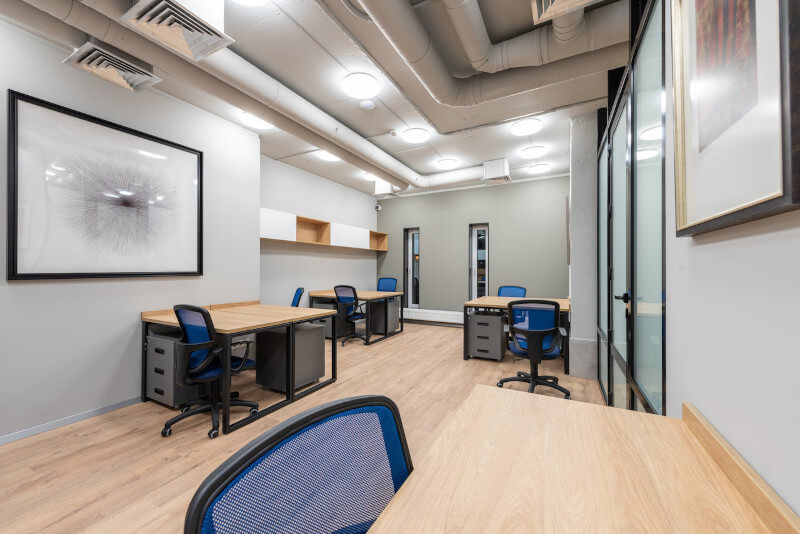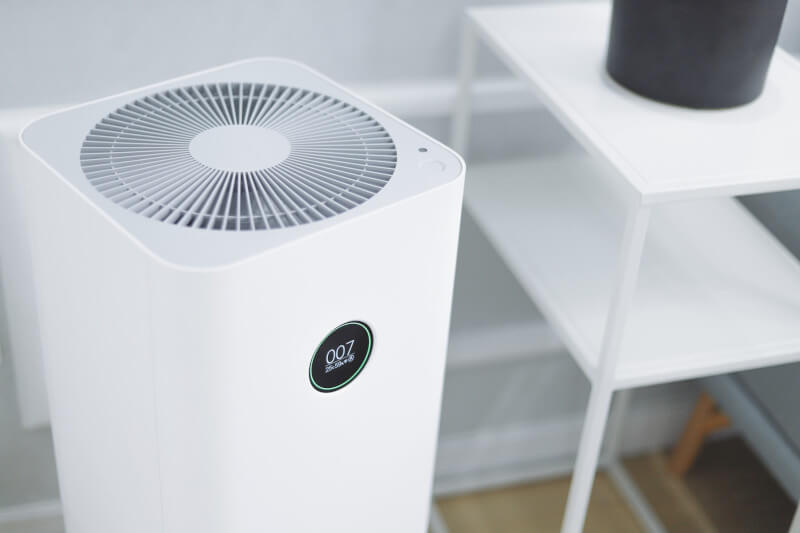
A properly installed air conditioning system can improve the quality of your indoor air, lower your energy bills, and increase your level of comfort. Due to this, it’s crucial to make the right decision. Ducted and ductless systems are the two most common types of air conditioning. Using a network of ducts, central air conditioners distribute the conditioned air to every room in a house. However, ductless air conditioning systems are installed by professionals inside the space to be cooled. They do not have ducts installed to distribute the conditioned air to different rooms. This comparison of ducted and ductless air conditioning systems should help you make an informed decision.
Systems That Use Ducts to Distribute Air for Cooling or Heating

Pros
- Ducted systems are installed by professionals inside the walls of a home, so they are out of sight and do not detract from the aesthetics of the space.
- Adjusting the temperature in your home is much simpler with a central heating system than if you had to do it with each appliance.
Cons
- Implementing a ducted cooling system is a time-consuming, costly, and invasive process because it requires construction companies to access the inside of your walls.
- Low efficiency because of the high amount of air lost as it travels through the duct system due to leaks.
- Debris and other allergens can collect in the ductwork and lower air quality if central air conditioning filters aren’t changed frequently.
When to Use Ducted Air Conditioning
A ductless mini-split might not be an option for you if… When choosing between a ducted and a ductless mini split, here are some cases in which ducted air conditioning would be the better option:
- Ducts are readily available in your area.
- Does your building have functioning ducts? Do you think it’s in pristine condition?
- Ducted air conditioning is a good choice because it helps you save both money and effort. All that’s needed is a link to the main duct, and you’ll be all set.
- A duct-based HVAC system is superior to a duct-less one in terms of moisture removal. The only thing left to do is hook up the device to the preexisting airflow.
- Because of the duct system, you won’t need to go through the trouble of purchasing a dehumidifier.
Better ventilation is essential
If you want to ensure optimal airflow, install ducted air conditioning. Each space benefits from the central duct system’s powerful air circulation. Additionally, a ducted system eliminates issues with air pressure and stale air.
Appeals to the Senses
The ductwork for the HVAC system is hidden from view, giving the system a sleek and unobtrusive appearance. This is the best system to use if aesthetics are important to you. To keep repair bills to a minimum, you must:
- Since there are fewer moving parts in a ductless heat pump, maintenance costs are reduced.
- Keeping the system clean is a one-time task, and the individual parts require less care overall.
Ductless Air-Conditioning

Pros
Ductless air conditioners, in contrast to central AC systems, require no major construction or remodeling to install and can be mounted on the ceiling or the wall with a simple access panel. That means they can usually be installed by a pro in a single day, rather than taking weeks. Proficient installers can place ductless cooling systems in a variety of locations to accommodate your home’s specific design.
Mini ductless air conditioners allow you to independently control the temperature in each zone of your home, rather than having to maintain one uniform temperature throughout. If your home has rooms that are consistently at different temperatures, zoned heating and cooling could be a lifesaver.
Ducted air conditioning systems have a bad reputation for making annoying noises like the power cycling on and off and the air rushing through the walls. However, ductless systems run so quietly that you might even forget they are installed. A ducted system’s installation is not only intrusive and time-consuming but also costly. Ductless air conditioning systems, on the other hand, are much cheaper.
Cons
Aesthetically speaking, ductless systems for air conditioning are more noticeable than pivotal temperature control systems, as they protrude from walls rather than being concealed within them. Pioneer Mini Split Store, however, provides several stylish alternatives to help conceal the clunkiness of the original models. Mini-split systems require regular maintenance, so remember to clean the filters once a month to extend their life and reduce the likelihood of expensive repairs down the road.
Mini-Split Air Conditioner, Ductless
Meanwhile, mini-split ductless systems are also referred to as split-ductless systems. This HVAC unit is ideal for climate control in a specific space. They find widespread application in a wide range of buildings, including private residences, businesses, and public institutions.
In place of ducts, a ductless mini-split system relies on discrete wall-mounted indoor units to provide heating and cooling to individual spaces. Mini-splits are not designed to cool an entire home, but rather to provide zoned comfort by directing conditioned air to specific rooms. Since there are smaller variables involved in mini-splits, they are more efficient than centralized systems.
The primary distinction between the two is that ducted systems only need a single air handler to condition the entire structure. Contrarily, a ductless HVAC system distributes multiple air handlers across a whole home or building with each air handler responsible for individually heating or cooling a specific zone or room.
Mini-split Air Conditioners: Ducted or Ductless?
In other words, why not combine the two?
When deciding between a ducted and ductless mini split, a compromise is possible. You can achieve maximum effectiveness, comfort, and accessibility by combining ducted and ductless systems. Consider the fact that a ductless system can be installed in an attic, shed, or garage without the need for costly or complicated new ductwork. Rooms can be cold or hot spot conditioned with a ductless system. Moreover, integrating the two systems provides an answer to the problem of heated thermostat debates in shared spaces.
Whether or Not to Use Ducting
The decision between a ducted and ductless heat pump is arbitrary. Working an air conditioner requires a lot of planning and consideration. The choice between a ducted and ductless mini split must be made based on your circumstances.
Take into account your finances, the area that needs climate control, and whether or not you’ll need zonal control before beginning any renovations or new construction. Before purchasing an AC unit, you should think about the following. There are plenty of options out there, so you’re bound to find a brand that suits your needs. Visit this page for ductless systems that suit your requirements.
